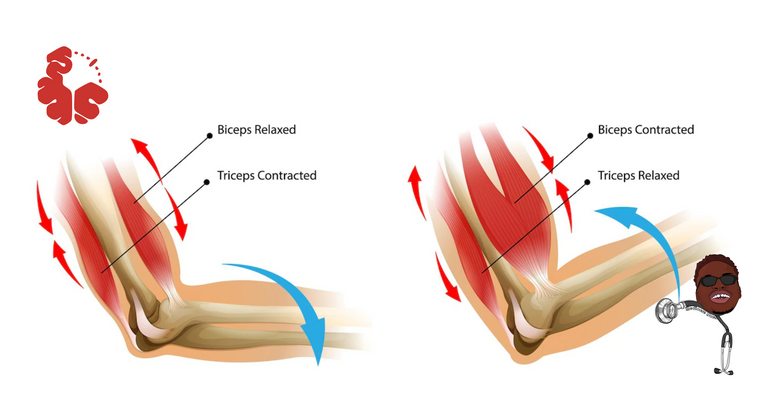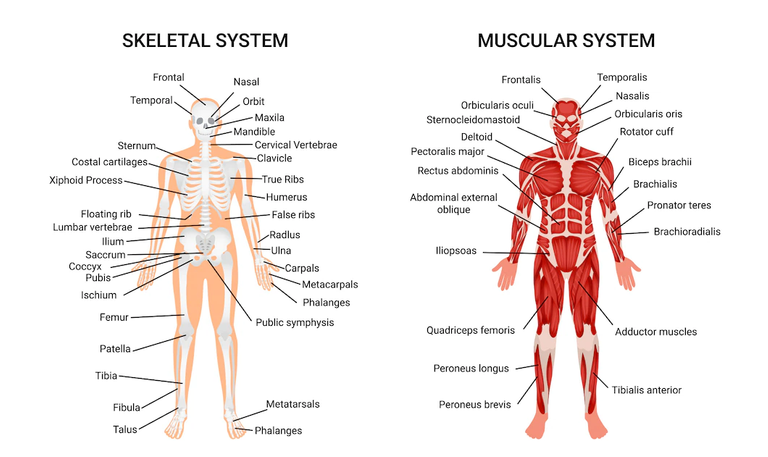The Structure And Function Of Muscles To Help You Build Them Up

Why do we need muscles in our body? Muscles work to move our bones and help us with tasks that require heavy lifting. They also help us to keep our balance. There are different types of muscle and they have special jobs too (e.g., cardiac muscles or your iliopsoas). In this article, we are going to learn about how muscle anatomy works so that you can make the most out of what you already have!
Types of Muscle Tissue
There are three types of muscle tissue: skeletal, cardiac, and smooth. Skeletal muscle tissue is what gives your body shape and allows you to move. Cardiac muscle tissue is responsible for pumping blood throughout your body. Smooth muscle tissue is found in the walls of hollow organs like the stomach and bladder.
Skeletal muscle tissue is made up of long, thin cells called myocytes. Each myocyte has many nuclei, which are surrounded by a network of proteins that give the cell its structure. The myocytes are arranged in parallel bundles, with each bundle containing many myocytes.
Cardiac muscle tissue is made up of shorter, thicker cells called cardiomyocytes. These cells have only one nucleus, and they are interconnected by protein structures called intercalated discs. The cardiomyocytes are arranged in a spiral pattern, with each cell overlapping the next.
Smooth muscle tissue is made up of spindle-shaped cells called smooth muscle cells (SMCs). These cells have a single nucleus, and they are interconnected by proteins called gap junctions. The SMCs are arranged in a random pattern, with each cell touching the next.
How the Central Neural System Helps You Move
The central nervous system (CNS) is the control center for the body. It consists of the brain and spinal cord. The CNS is responsible for sending signals to the muscles to make them move.
There are two types of muscles in the body: voluntary and involuntary. Voluntary muscles are under conscious control, while involuntary muscles are not. Most of the muscles in the body are voluntary.
The CNS uses nerve cells to send signals to the muscles. These nerve cells are located in the brain and spinal cord. Nerve cells are also found in other parts of the body, but they do not play a direct role in muscle movement.
The CNS uses electrical impulses to communicate with the muscles. These impulses travel through the nerves to the muscles, causing them to contract. This process is called excitation-contraction coupling.
Excitation-contraction coupling is responsible for all types of muscle movement, including walking, running, and lifting weights. without this process, we would be unable to move our bodies
Types of Movement Muscle Units
Voluntary muscles make up the majority of the muscles in the human body and are under conscious control. They are attached to bones by tendons and produce movement at joints. Voluntary muscles can be subdivided into three types based on their structure and function: skeletal, smooth, and cardiac muscle.
Skeletal muscle is also known as striated muscle because of the alternating light and dark bands that run across its length. This type of muscle is attached to bones via tendons and is responsible for producing voluntary movements of the skeleton, such as walking, running, and lifting. Skeletal muscles are composed of long, thin fibers that are arranged in bundles. They contract when stimulated by nerves to produce movement.
Smooth muscle is found in the walls of internal organs such as the stomach, intestines, bladder, and blood vessels. Unlike skeletal muscle, smooth muscle is not under conscious control and contracts automatically in response to stimuli such as changes in pressure or temperature. Smooth muscle fibers are shorter and thicker than skeletal muscle fibers and are arranged in sheets or layers.
Cardiac muscle is found only in the heart. Like smooth muscle, it contracts automatically in response to stimuli but is also capable of some level of independent contraction without nerve input. Cardiac muscle fibers are shorter and thicker than skeletal muscle fibers but are arranged in a branching pattern rather than sheets or layers.
Distribution of Skeletal Muscle Fiber Types
Skeletal muscle is made up of three different types of fibers: type I, type IIa, and type IIx. Type I fibers are also known as slow-twitch or slow-oxidative fibers. They are small in diameter and have a low power output but can sustain long periods of activity. Type IIa fibers are also known as fast-twitch or fast-glycolytic fibers. They are larger in diameter and produce more power but tire quickly. Type IIx fibers are a hybrid of the two previous types.
Most skeletal muscles are a mix of all three fiber types, but the distribution varies depending on the muscle and its function. For example, muscles used for endurance activities tend to have a higher ratio of type I fibers while muscles used for short bursts of power have a higher ratio of type IIa and type IIx fibers.
Understanding the distribution of fiber types within a muscle can help you better target your training. If you want to increase endurance, you would focus on exercises that tax the type I fibers more than the others. To build strength, you would focus on exercises that tax the type IIa and type IIx fibers more than the others. And if you want to improve both endurance and strength, you would focus on exercises that tax all three types of fibers equally.
The Origins and Insertions of Muscles

There are over 600 muscles in the human body, and each one has a specific origin point and insertion point. The origins of muscles are the stationary points, usually attached to bone, while the insertions are the more mobile points, often attached to tendons.
When a muscle contracts, it shortens and pulls on its insertion point, which then moves the bone or other tissue to which it is attached. For example, the biceps muscle in the upper arm has its origin attached to the shoulder blade, and its insertion attached to the bones of the forearm. When this muscle contracts, it bends the elbow joint.
The size, shape, and position of a muscle can affect its function. For example, some muscles are long and thin, while others are short and round. Muscles that cross two joints (like the biceps) can produce more movement than those that cross just one joint (like the triceps). And muscles that are located closer to a joint have more leverage than those located farther away.
Moving Your Body with Muscles
When we talk about moving our bodies with muscles, we are talking about using the muscles in our body to create movement. This can be anything from simply moving our arm to pick up a glass of water, to running a marathon.
There are three types of muscle contractions that we use to create movement:Concentric – this is when the muscle shortens as it contracts. For example, when you curl your arm up in a bicep curl, the concentric contraction is when your hand moves up towards your shoulder.
Eccentric – this is when the muscle lengthens as it contracts. For example, when you lower your arm back down in a bicep curl, the eccentric contraction is when your hand moves back down towards your side.
Isometric – this is when the muscle neither lengthens nor shortens as it contracts. An example of this would be holding a weight in your hand and not moving it, even though your muscles are contracting and working hard.
All three types of contractions are important for different reasons and different types of movements. Concentric contractions are used for most “lifting” type movements, eccentric contractions are important for controlling movements and preventing injuries, and isometric contractions help us to generate force and maintain our posture.
It’s important to remember that all muscles work together in pairs ( agonist/antagonist ), so when one muscle contracts (the agonist ), the opposite muscle must
Conclusion
We hope that this article has given you a detailed understanding of the structure and function of human muscles. With this knowledge in hand, you can approach your muscle-building goals with confidence, knowing that you are working towards strengthening and developing your muscles in the most efficient way possible. Remember to focus on quality over quantity when it comes to weightlifting, and always consult with a doctor or certified personal trainer before starting any new workout routine.
Thanks for your contribution to the STEMsocial community. Feel free to join us on discord to get to know the rest of us!
Please consider delegating to the @stemsocial account (85% of the curation rewards are returned).
You may also include @stemsocial as a beneficiary of the rewards of this post to get a stronger support.
Thank you!